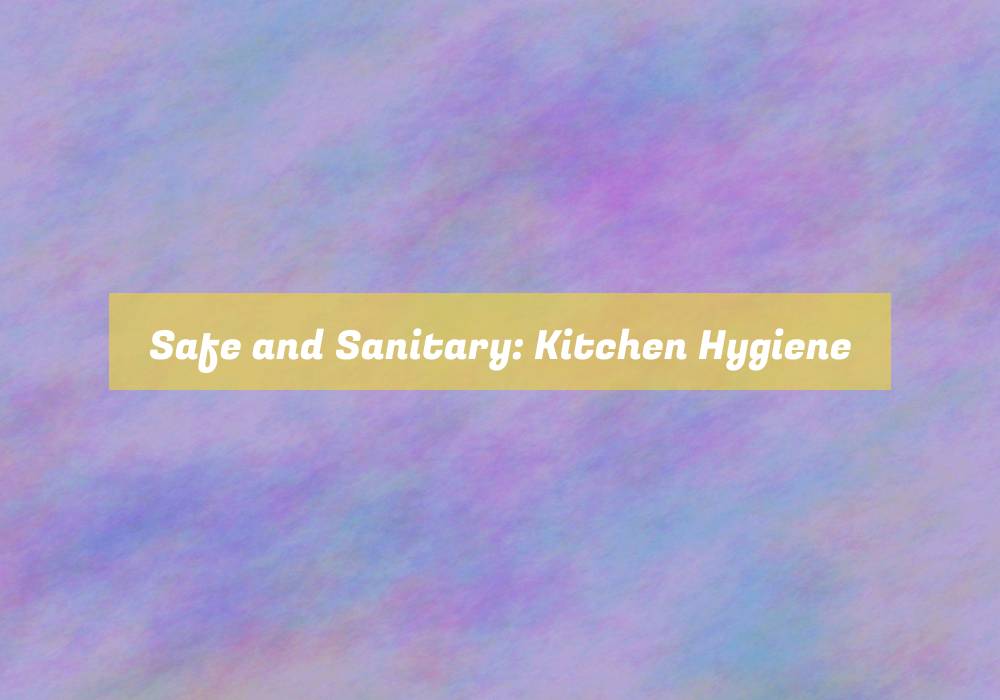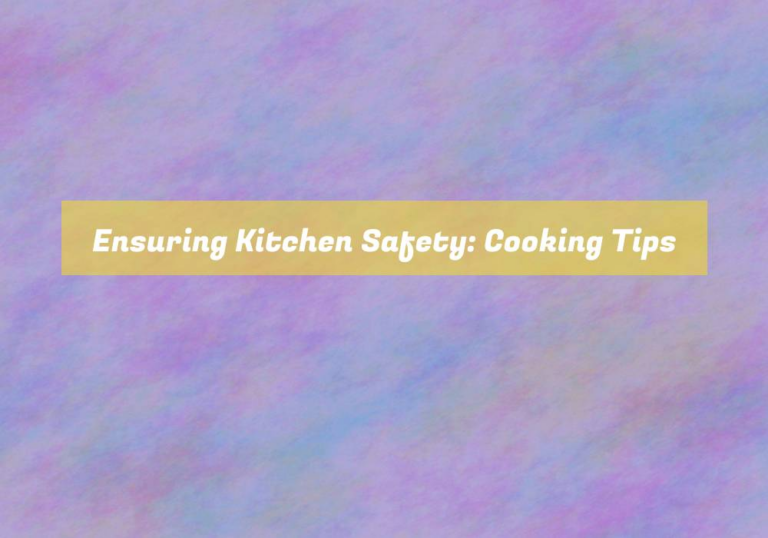Safe and Sanitary: Kitchen Hygiene
Did you know that according to the CDC, each year 48 million people in the United States get sick from a foodborne illness?
Maintaining a clean and hygienic kitchen is essential to preventing the spread of harmful bacteria and ensuring the safety of your family and guests.
From proper handwashing techniques to minimizing cross-contamination, there are several key practices that can significantly reduce the risk of foodborne illnesses.
By implementing these strategies, you can create a safe and sanitary environment in your kitchen.
Importance of Kitchen Hygiene
Maintaining proper kitchen hygiene is crucial for preventing foodborne illnesses and ensuring the safety of everyone who consumes food prepared in your kitchen. By following simple practices, you can significantly reduce the risk of contamination and foodborne diseases.
Regular handwashing is one of the most effective ways to prevent the spread of harmful bacteria and viruses. Always wash your hands with soap and warm water before and after handling food, after using the restroom, and after touching any potentially contaminated surfaces.
Additionally, keeping your kitchen surfaces clean and sanitized is essential. Use hot, soapy water to clean countertops, cutting boards, and utensils after each use. Sanitize these surfaces regularly to kill any lingering bacteria.
Furthermore, proper food storage is paramount. Store raw meats separately from ready-to-eat foods to prevent cross-contamination. Ensure that your refrigerator is set to the appropriate temperature to keep perishable foods fresh and safe to eat.
Handwashing Techniques
To ensure proper kitchen hygiene and minimize the risk of foodborne illnesses, itG??s essential to master effective handwashing techniques.
Start by wetting your hands with clean, running water, and then apply soap. Rub your hands together to lather the soap, ensuring to scrub the backs of your hands, between your fingers, and under your nails. This process should take at least 20 seconds, about the time it takes to sing G??Happy BirthdayG?? twice.
After thorough scrubbing, rinse your hands well under clean, running water. Then, use a clean towel or air dry your hands.
ItG??s important to wash your hands at key times, such as before, during, and after preparing food, before eating, after using the restroom, and after handling raw meat or poultry. Additionally, if your hands come into contact with anything that may contaminate them, itG??s crucial to wash them immediately.
Minimizing Cross-Contamination
To prevent cross-contamination in the kitchen, always use separate cutting boards and utensils for raw meat and ready-to-eat foods. This simple step is crucial in minimizing the risk of spreading harmful bacteria from raw meat to foods that are ready to be consumed without further cooking.
When preparing meals, designate specific cutting boards for raw meat, poultry, and seafood, and another set of cutting boards for fruits, vegetables, and other ready-to-eat items. Similarly, ensure that separate utensils such as knives and tongs are used for handling raw meats and cooked foods to avoid any potential transfer of bacteria.
ItG??s also important to clean and sanitize all surfaces, utensils, and countertops after they come into contact with raw meat. Use hot, soapy water to wash these items thoroughly. Additionally, consider using a sanitizing solution to further disinfect surfaces and utensils, especially after theyG??ve been in contact with raw meats.
Food Storage Hygiene
After preventing cross-contamination in the kitchen by using separate cutting boards and utensils for raw meat and ready-to-eat foods, itG??s essential to focus on proper food storage hygiene to maintain a safe and sanitary environment.
When it comes to food storage, the golden rule is to keep raw meats, poultry, and seafood separate from other foods to prevent any potential cross-contamination. Always store these items in sealed containers or plastic bags on the bottom shelf of the refrigerator to avoid any drips or leaks onto other foods.
Additionally, itG??s crucial to label and date all leftovers and perishable items to ensure that theyG??re used within a safe timeframe. When storing canned goods, be sure to rotate them so that the oldest cans are used first. Keep your pantry organized, and regularly check for expired items to maintain a clean and safe storage space.
Lastly, be mindful of the temperature of your refrigerator and freezer. Your refrigerator should be set at 40-?F (4-?C) or below, and your freezer at 0-?F (-18-?C) to effectively preserve the freshness and quality of your food.
Conclusion
So, keep your kitchen clean and safe by following these simple steps:
- Wash your hands properly
- Prevent cross-contamination
- Practice proper food storage
By doing these things, you can ensure a safe and sanitary environment for preparing and cooking food. Good kitchen hygiene is essential for the health and well-being of you and your loved ones.
Keep these tips in mind and enjoy cooking in a clean and safe kitchen!








You’ve raised an important point about the critical role of kitchen hygiene in preventing foodborne illnesses. I often reflect on how cultural practices around food preparation can influence our hygiene habits. For example, in many cultures, cooking is a communal activity where multiple people are involved, which can increase the risk of cross-contamination if proper measures aren’t taken.